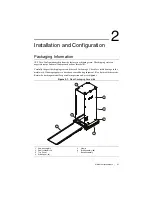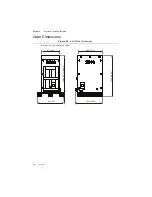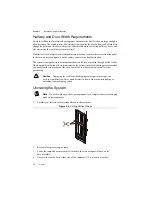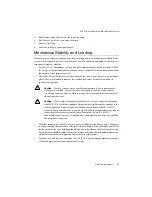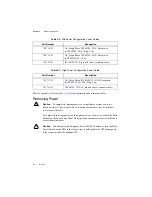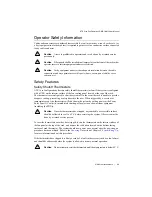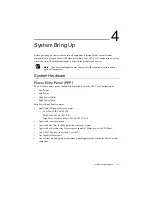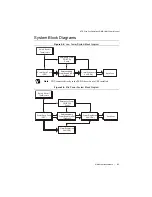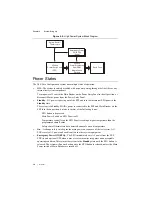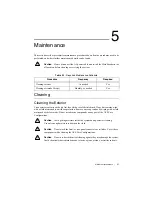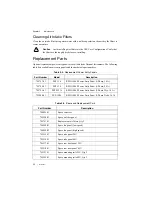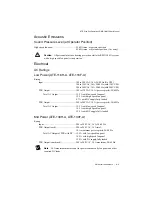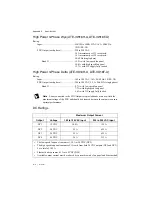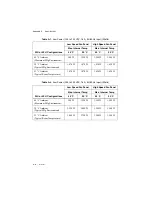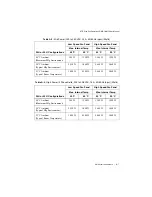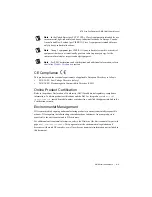
4-4
|
ni.com
Chapter 4
System Bring Up
•
High Power ATE Core Configuration systems utilize a three-phase PDU that supports
global voltages (200-208 V Delta and 380-415 V Wye, 50-60 Hz) and has a fixed 16 A
(IEC 60309 3P + N + E) power cable which connects directly to the Power Entry Panel.
Refer to your Power Distribution Unit user documentation for more information about the PDU.
Emergency Power Off (EPO) Panel
When a test system encounters a serious issue or an emergency is taking place in the facility,
operators need the ability to quickly and cleanly power off the test system. EPO mechanisms are
included on the ATE Core Configurations to simplify connectivity and inhibit power switching.
Operators may use the EPO to reset a system in an error state, prevent damage to a DUT, or even
prevent harm to themselves.
Figure 4-3.
EPO Panel
Emergency Power Off (EPO) Button
The EPO button is one way to control whether the system is powered. If the EPO button is
pressed, power will not flow past the PEP or optional UPS. To release the EPO button once
it has been pressed, rotate it clockwise.
Main Power Switch
The Main Power Switch is the primary way of controlling whether the system is active. It toggles
between two positions: Standby and On.
Temperature Controller
The Temperature Controller (AutomationDirect SL4824-RR-D) will shut off the rack if the
internal temperature reaches a certain user programmable level. The controller measures
temperature based on the location of the attached thermocouple.
Uninterruptable Power Supply (UPS)
You can use the UPS to power critical components in your system during power loss, brownouts,
and during normal operation as well. The UPS delivers power with a dependable voltage and
current supply. It acts as a battery power supply after a power outage or significant brownout.
Refer to your Uninterruptable Power Supply user documentation for more information about the UPS.
1
Main Power Switch
2
Temperature Controller
3
EPO Button
1
2
3
NATIONAL
INSTRUMENTS

